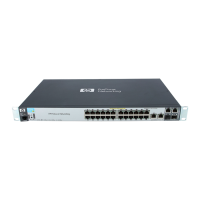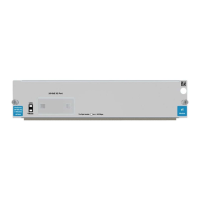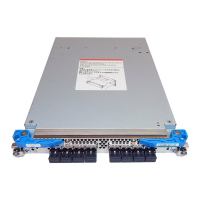Port Trunking
Overview
Overview
This chapter describes creating and modifying port trunk groups. This
includes non-protocol trunks and LACP (802.3ad) trunks.
Port Status and Configuration Features
Feature Default Menu CLI Web
viewing port trunks n/a page 12-9 page 12-11 page 12-17
configuring a static trunk none page 12-9 page 12-15 —
group
configuring a dynamic LACP disabled — page 12-15 —
trunk group
Port trunking allows you to assign up to eight physical links to one logical link
(trunk) that functions as a single, higher-speed link providing dramatically
increased bandwidth. This capability applies to connections between back-
bone devices as well as to connections in other network areas where traffic
bottlenecks exist. A trunk group is a set of up to eight ports configured as
members of the same port trunk. Note that the ports in a trunk group do not
have to be consecutive. For example:
The multiple physical links in a trunk behave as one logical link
Switch 2:
Switch 1:
port 1
port c1
port 2
port c2
Ports a1, a3 - a4,
Ports c1 - c3,
port 3
port c3
a6 - a8, a11, and
c5 - c7, and
port 4
port c4
a12 configured
c9 - c10
port 5
port c5
as a port trunk
configured as a
port 6
port c6
group
port trunk group.
port 7
port c8
port c7
port 8
port c9
port 9
port c10
port 10
port 11
port n
…
port 12
…
port n
Figure 12-1. Conceptual Example of Port Trunking
With full-duplex operation in a eight-port trunk group, trunking enables the
following bandwidth capabilities:
12-2

